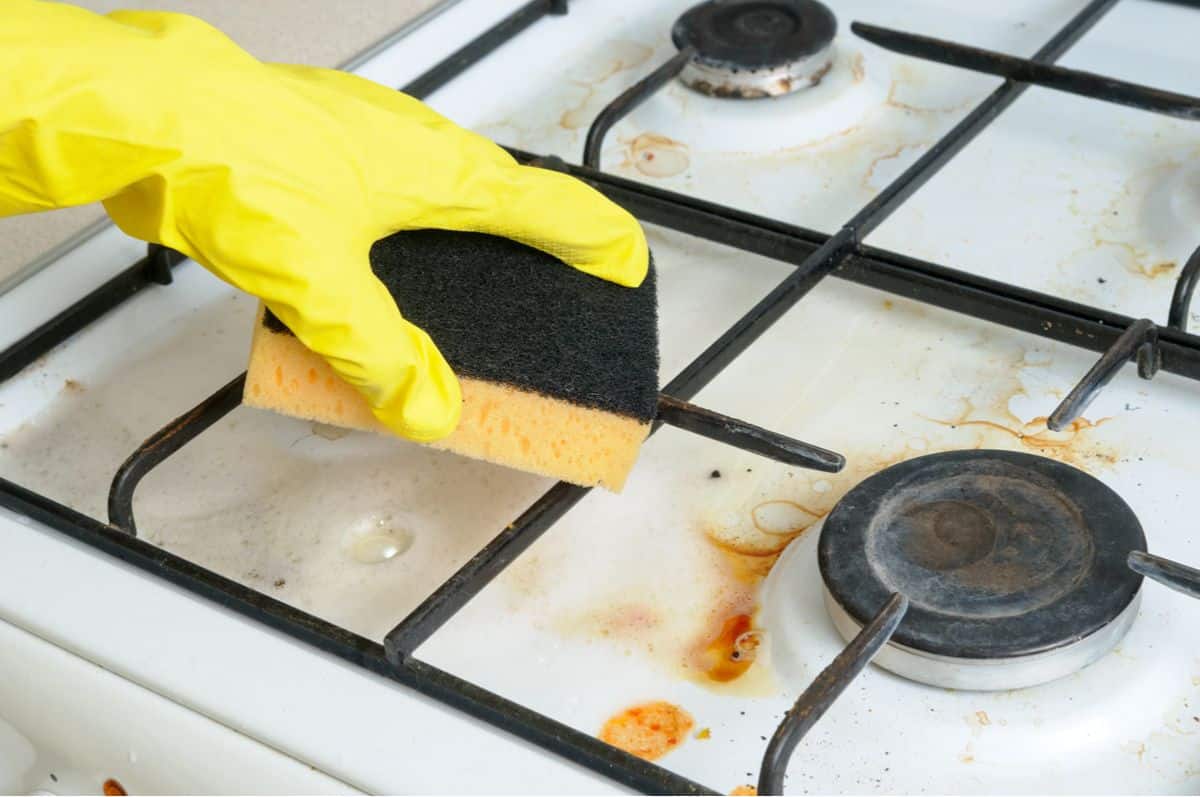Getting rid of dirt and grease from stoves, ovens and frying pans can be stressful. Learn how to clean grease the easy way.
Cleaning grease from pans, stoves and grills is a daily drama for those who cook and, from time to time, it spills over into the oil and butter. Immediately after preparing the food, there is nowhere to run: dirt is imminent. Be that as it may, there’s not much you can do other than get down to business and get started with the cleaning routine. But after all, how can you clean grease from surfaces such as cooktops, grills, frying pans and stoves without stress? Although it may seem impossible, the task can be much more practical than it usually is.
First of all, the essential thing is to understand that having a periodic cleaning routine is essential to avoid further difficulties. In the case of the oven and stove, for example, cleaning any oil or burnt stains immediately after use prevents them from sticking and hindering work in the future. For pots and pans, using a sponge and detergent is the most common solution, but sometimes this is not enough. Thus, some miraculous mixtures come into play to facilitate the work and still guarantee maximum efficiency.
Check out everything you need to know below about how to clean grease in easy and practical ways. In this sense, learn about the different ways to clean different surfaces and utensils, using common everyday ingredients, such as vinegar and bicarbonate.
How to clean fat?
Firstly, ensuring your own safety before starting any cleaning is crucial. Therefore, make sure the stove is unplugged and, in this case, never use flammable cleaning products.
Also, pay attention to the material you will be cleaning. A stainless steel or enameled stove, for example, should only be cleaned with white, yellow or blue plugs, so that nothing damages the appliance. Green sponge or steel wool are examples of abrasive materials that should be avoided. When choosing products, give preference to those with a mild aroma, so that the smell does not pass into the food.
In the case of grills and frying pans, the best solution is simply to use a good detergent. Using a sponge, you can remove any grease accumulation without much effort. In the case of greasy utensils with an accumulation of old residue, after cleaning with detergent, using baking soda or vinegar always helps and eliminates all the dirt once and for all.
1 – How to clean the stove
One of the best ways to clean the stove is using specific degreasers for the appliance. Typically, the products are powerful and solve the grease problem, and you won’t need to use anything other than a soft sponge or cloth to scrub the dirt.
However, homemade recipes are also great and work as well as any product. This is the case with white vinegar: just spread it over the surface of the stove and let it act for 15 minutes. Then wipe with a dry cloth or paper towel. In addition, a solution of hot water mixed with a portion of baking soda and vinegar also works miracles. In this case, just dip a cloth in the mixture and wipe it on your stove. Check out the ideal step-by-step guide for completely cleaning the device:
- First of all, remove all removable parts from the surface. Leave them to soak in hot water with neutral detergent or degreaser for 30 minutes;
- Fill a container with warm water and the cleaning product of your choice. Then, gently rub the surface with a non-abrasive sponge;
- Finally, just wipe with a dry, clean cloth, replacing the detachable parts in their proper place.
2 – How to clean the oven
Cleaning the oven follows practically the same instructions as cleaning the stove, but with some extra care. After all, it is important to avoid excess water, something that can damage the device. However, it is not necessary to use any product other than the basic ones.
- First, remove the rack from the oven to let it soak for at least 30 minutes. Place it in a basin or sink in a mixture of hot water with neutral detergent or degreaser;
- Cover the holes in the oven with some thin perfex-type cloths, so that any product used cannot damage the device;
- Place some floor cloths around the oven so that water does not fall on the floor and wet the rest of the kitchen;
- Mix some warm water with your product of choice in a container. Then, use the mixture to scrub the area with dirt, always with a non-abrasive sponge and without using too much force;
- Finally, wipe everything with a dry, clean cloth. To clean the inside of the oven, remember to replace the sponge with a long-barreled brush with nylon bristles, for example.
3 – Cleaning grills
Typically, grills are made from more resistant materials, which allows the use of steel wool, for example. However, to ensure that cleaning is easy, it is essential to always carry it out immediately after using the appliance. This way, you avoid fat accumulation and stress.
- First, remove the grill from the socket;
- Then, using steel wool or a sponge, rub the surface with detergent to remove the heaviest grease;
- If necessary, spray a little vinegar on the grill, placing a damp cloth on top. Wait a few minutes until the dirt softens;
- Remove the rest of the grease with a cloth and, finally, use a little more detergent to get rid of the residue once and for all.
4 – Cleaning the frying pan
In the case of frying pans, it is recommended to be a little more careful with the materials used to clean them. In non-stick frying pans, for example, it is not possible to use steel wool. Furthermore, when cooking, always choose silicone spatulas or any plastic and wooden utensils that do not scratch or scratch the paint.
- Using a soft sponge, rub the greasy area with detergent, allowing the product to act for a while. Then rinse well;
- To ensure that no stains remain on the surface of your frying pan, add vinegar or baking soda, or both together. Add a little water and turn on the stove, so that the mixture softens the fat once and for all;
- Finally, remove the liquid and, after the container has cooled, rub again with your soft sponge, wiping the outside with a damp cloth or the soft part of the sponge.

Sign up for our newsletter and stay up to date with exclusive news
that can transform your routine!
Warning: Undefined array key "title" in /home/storelat/public_html/wp-content/plugins/link-whisper-premium/templates/frontend/related-posts.php on line 12
Warning: Undefined array key "title_tag" in /home/storelat/public_html/wp-content/plugins/link-whisper-premium/templates/frontend/related-posts.php on line 13




